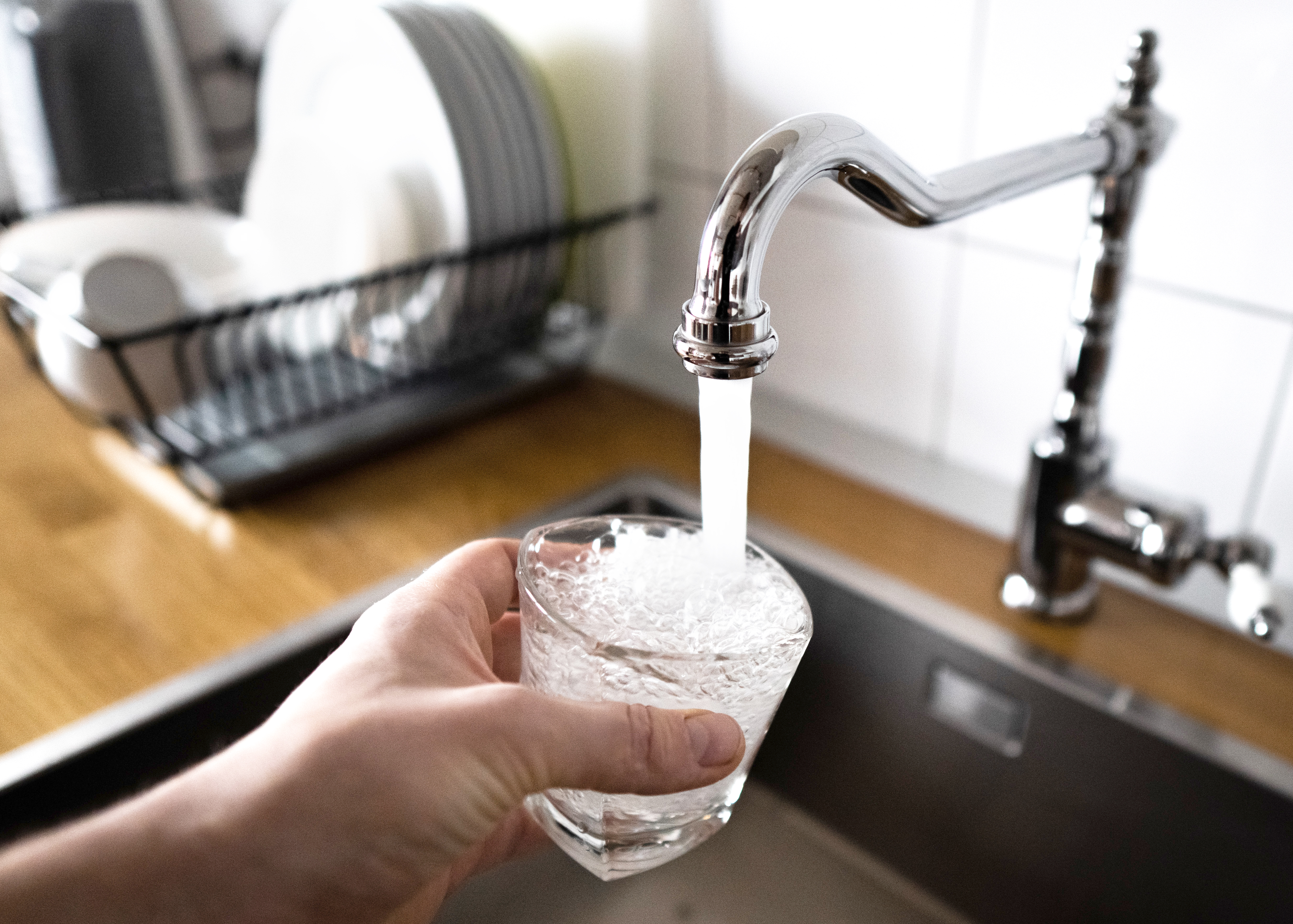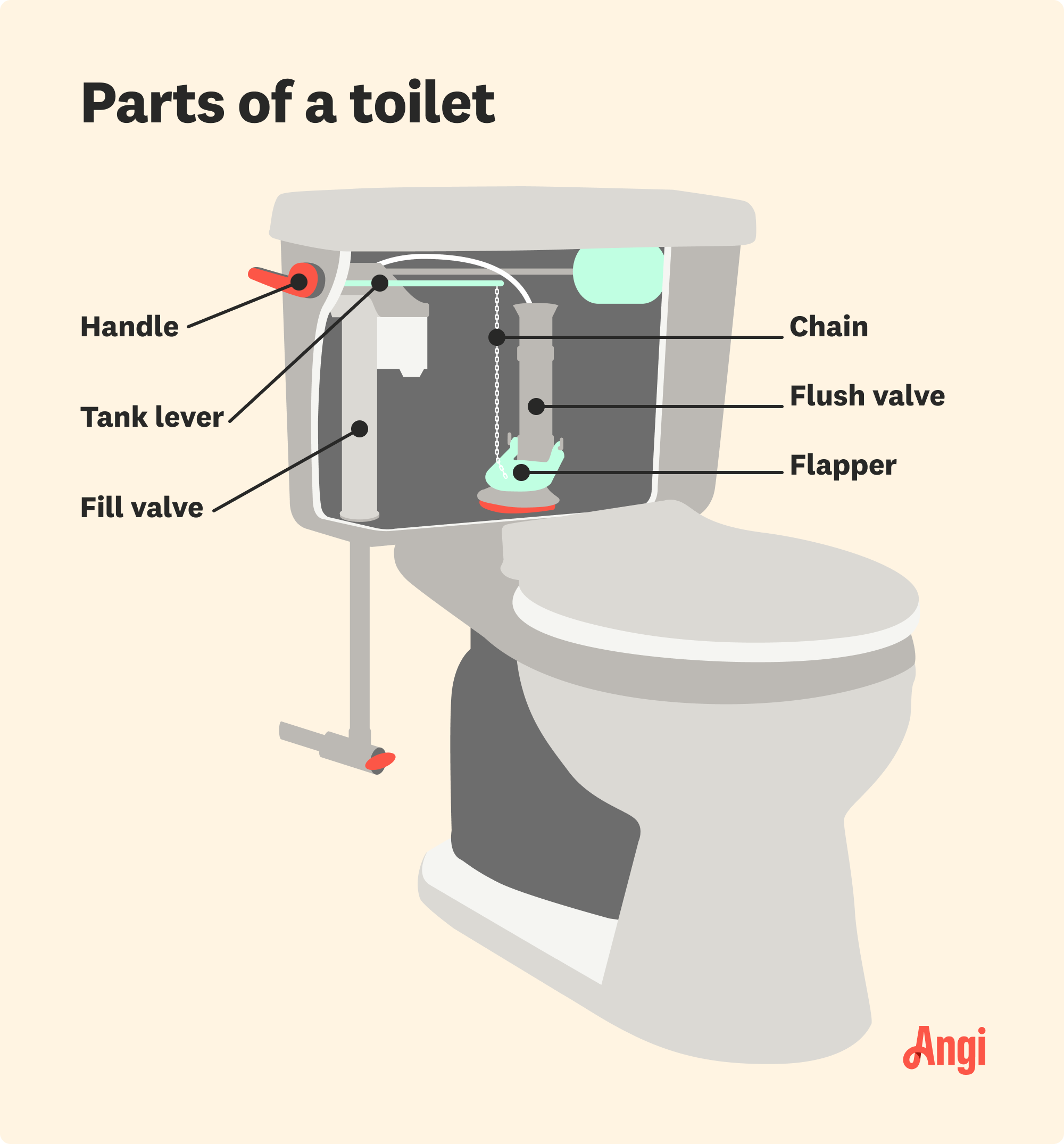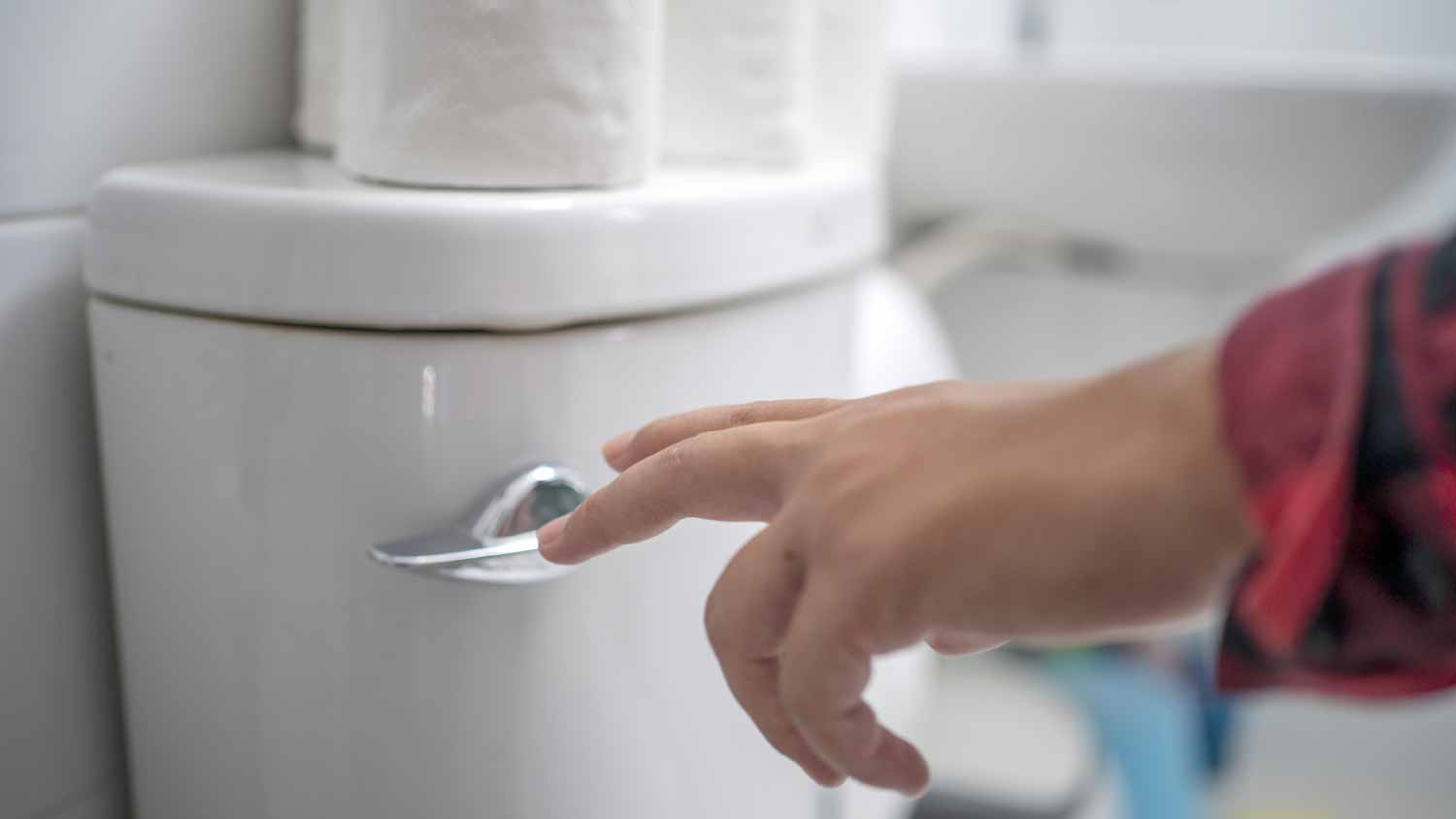
Learn about main water line repair costs in Columbus and what affects pricing to be prepared before you start getting estimates.
The key to the perfect flush


The toilet flapper is the round rubber piece on the bottom of your toilet tank.
When you flush the toilet, the flapper lifts and allows water to flow into the bowl.
A damaged or poorly adjusted flapper causes problems with flushing or makes a toilet run continuously.
Replacing a toilet flapper is a DIYable project or you can call a plumber.
A constantly running toilet or weak or short flushes can slow you down during your busy day and cause high water bills. Before distressing, check to see if it’s a simple problem with your toilet flapper. Read on to find out what a toilet flapper is and how to figure out if it’s the culprit behind your plumbing woes.
The toilet flapper is a circular rubber piece that seals the flush valve opening, making it an essential part of the toilet. The flush valve is at the bottom of the tank and allows water to flow between the tank and the bowl. A properly working flapper ensures water stays in the tank until you flush the toilet.
The standard and most common flapper size is 2 inches, although there are 3-inch flappers. To determine the right flapper size for your toilet, measure the diameter of your flush valve opening.
Rubber toilet bowl flappers are the most common, either adjustable or nonadjustable. Adjustable flappers, which sometimes come with a float, allow you to change how much water is flushed. These types of toilet flappers are available for toilets that use 1.28 to 3.5 gallons per flush (GPF).
Nonadjustable flappers are for older toilets manufactured before 1994. For these toilets, you also have the choice of vinyl flappers, which are bacteria- and chemical-resistant and have a longer life span.
You can also find options in plastic, silicone, metal, and Acrylonitrile Butadiene Styrene (ABS), a type of thermoplastic. These flappers are manufactured for specific toilet brands and models. A toilet repair pro can steer you in the right direction and help you choose the right flapper for your toilet.

The toilet flapper connects to your tank lever via a chain. When you press down on your toilet handle to flush it, the tank lever lifts along with the chain. This also causes the flapper to lift, allowing the water to flow from the tank into the bowl. Once the tank empties, the toilet flapper closes, and the fill valve refills the tank.

You’ll likely have two problems with toilet flappers: constantly running toilets and flushing issues.
Here are some possible reasons why your toilet is constantly running. For one, you might have a worn-out, cracked, or damaged flapper that no longer creates a tight seal. Or, you might have a problem with the chain. It could be adjusted too tightly, so your flapper can’t shut all the way. The same issue can happen if the chain gets twisted. Additionally, you might have sediment or rust buildup on your flush valve opening.
If you’re having flushing issues, here are a few things to look for. A common issue is a short flush, which requires you to hold down the lever longer than usual to get a complete flush. The problem happens when the chain has too much slack, so the flapper doesn’t fully open when you flush the toilet. You might also have a weak flush. This can happen if your flapper has a float that needs readjusting.
A visual inspection of your toilet flapper will help determine if you need a new one. If your flapper is worn out, cracked, or damaged, replace it immediately to avoid an excessively high water bill. Your flapper material can deteriorate due to mold, mildew, or bacteria growth. Using harsh chemical cleaners in your toilet bowl can also break down your flapper over time.
Another instance when you should replace your flapper is if it’s been over four to five years since you installed a new one. That’s about how long a toilet flapper lasts, so changing it out regularly will help you prevent problems.
Whether there’s an issue with your flapper or it’s nearing the end of its life span, hire a toilet repair service near you to help out. A pro will inspect your toilet and fix your flapper or install a replacement. It’s advantageous to have a pro take a look at what’s going on just in case you have other issues with your toilet. For example, a constantly running toilet is sometimes caused by a broken fill valve.
On the other hand, if you’d like to put your DIY skills to use, you could learn how to fix a leaky toilet flapper or how to adjust the chain tension. These are beginner DIY projects, as long as you have some time and are willing to learn a thing or two.
A leaky toilet flapper can cause your toilet to run constantly, so your next water bill could be unusually high. Luckily, learning how to replace a flapper is fairly simple.
First, turn off the water valve and remove the toilet tank lid. Flush the toilet once or twice to empty the water from the tank. Next, remove the old flapper by unclipping the arms and removing the chain.
Installing the new flapper requires aligning it with the small pegs and sliding it into place over the flush valve. Connect the new chain to the flush handle lever, and attach the arms. Once you’re done, turn your water back on and do a test flush to make sure everything was done correctly.
If you want to pay the most exorbitant prices possible for your job, this is the company for you. “By the job” pricing is a rip-off, at least how these people use it. Every job is plugged into a category and prices are set by category. You might have a job that takes half an hour or one that...
Matt is a consummate professional. The work turned out to be far more difficult than expected and rather than turn the job down, Matt rose to the occasion and completed a near impossible task. I can not recommend Greene's Plumbing Service more highly. On a scale of 1-5 I would give Matt a...
Involved an extensive bathroom remodel, including removing tub & installing walk in shower, new drywall, custome tile work to ceiling, plumbing, etc. Overall, job was done on time and on budget. Nick & his team were very professional and had high attention to detail. Quality was great. Highly...
The plumber was late the first date and explained that he was tied up on the previous job that took much longer than anticipated. We rescheduled for the next day and he showed up first thing in the morning. He quickly fixed the leaking sink faucet and a commode that was loose on its base. He...
Very professional. Explained what they were doing and what we need to do to keep system running well. Will use them again for plumbing and HVAC services
Fine, done in timely manner. The plumber wore shoe booties to protect our floors.
Chris was punctual, and even went out of his way to go back out to the hardware store to pick up additional items that I had not known to get for the install...I'm not a plumber...that's why I hired a handyman. Thank goodness Chris didn't seem to mind the extra step. He was even mindful to...
From average costs to expert advice, get all the answers you need to get your job done.

Learn about main water line repair costs in Columbus and what affects pricing to be prepared before you start getting estimates.

Discover the leading factors affecting your main water line replacement cost in Columbus, including length, material selection, and installation details.

Learn how much plumbers cost in Columbus, Ohio. Discover pricing for faucet repairs, pipe work, and emergency services, plus how you can save money.

Learning about the different parts of your bathtub plumbing system is useful when you need to repair or replace a component. This guide has all of the parts covered.

The hidden parts of your shower drain keep everything flowing. Reference our shower drain plumbing diagram to understand how your shower drain works.

If you need trenchless sewer repairs, you’ve no doubt asked yourself, “What is pipe bursting?” This guide answers that question and so much more.